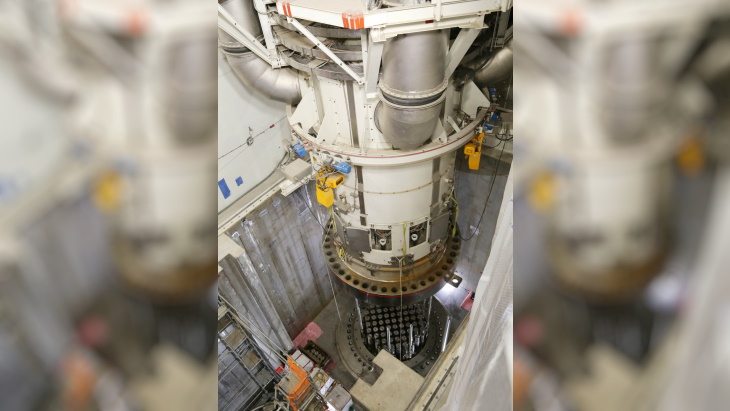The IHP, which is 48 feet (14.6 metres) high and weighs 475,000 pounds (215 tonnes) is an integral component that will eventually be used by nuclear operators to monitor and control the nuclear reaction that will occur inside the reactor vessel. Georgia Power described its installation as a "significant milestone".
Georgia Power earlier this month announced the completion of open vessel testing at unit 3, which demonstrates how water flows from the key safety systems into the reactor vessel ensuring the paths are not blocked or constricted. This also prepares the unit for cold hydro testing and hot functional testing - both critical tests required ahead of initial fuel load - by confirming pumps, motors, valves, pipes and other components of the systems function as designed.
Thomas Fanning, CEO of Georgia Power parent Southern Company, said in a conference call on 30 April that cold hydro testing is planned to begin in June or July, with hot functional testing beginning in August or September.
Construction of Vogtle unit 3 began in March 2013 and unit 4 in November the same year. Southern Nuclear and Georgia Power, both subsidiaries of Southern Company, took over management of the construction project in 2017 following Westinghouse's Chapter 11 bankruptcy. Vogtle 3 is scheduled to enter service by November 2021 and unit 4 by November 2022, although earlier this year Fanning told shareholders the first unit could be brought online as early as May 2021. The company has subsequently said the effects of the COVID-19 pandemic could potentially disrupt or delay construction, testing, supervisory and support activities at Vogtle 3 and 4.





_18938.jpg)
_33584.jpg)
_82983.jpg)
_49382.jpg)





